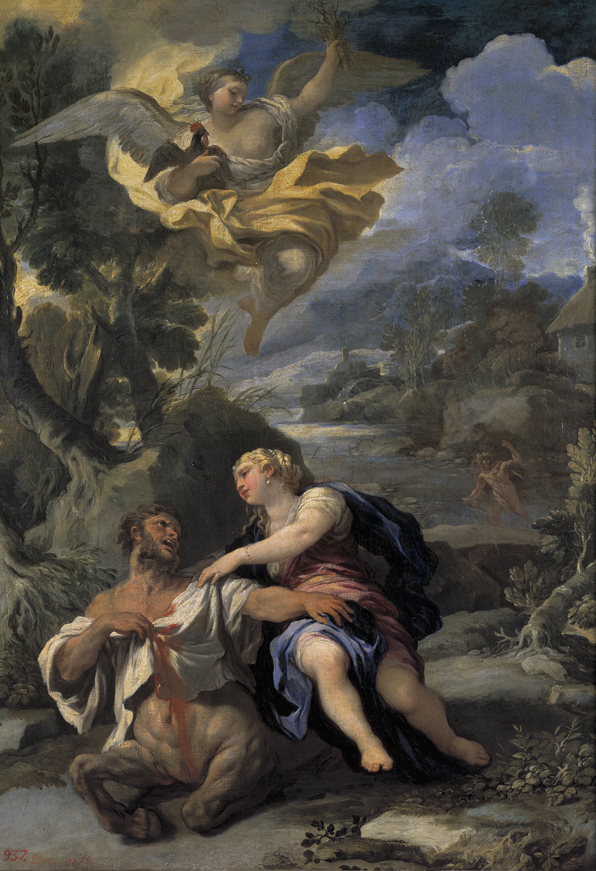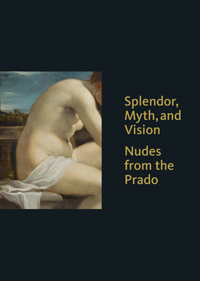
June 11–October 10, 2016
the sala reservada: collecting and displaying the nude
Luca Giordano
Italian, 1634–1705
Death of Nessus, c. 1696–97
Oil on canvas
44 7/8 x 31 1/8 in. (114 x 79 cm)
Museo Nacional del Prado, Madrid
P00193
Salas reservadas—private chambers for the display and viewing of paintings of the nude—are known to have existed in Spain from the late sixteenth century. These specialized spaces played a major role in the collecting and display practices of the Spanish monarchy and aristocracy in the early modern period. Separated from public access and intended to serve the interests of a select few, the sala reservada was a strategy that arose in relation to the moral and religious restrictions placed on the display of the nude by the Catholic Church, which considered making and viewing such paintings a mortal sin. In the protected space of the sala reservada, royal and other elite collectors could freely admire these works without openly violating the religious and cultural mores of the authorities.
The rooms went by different names, though some were specifically called sala reservada. Titian’s correspondence with Philip II about a series of female nude mythologies refers to "your little room"—almost certainly a sequestered space for viewing shielded from the public. Philip IV continued this practice in various forms, such as with the creation of the Titian Vaults in the Alcázar Palace in the seventeenth century. In later periods, works of art containing nude figures were often sequestered, and some sovereigns contemplated burning them. The sala reservada, in turn, assumed a role of protection.
In 1792, the Real Academia de San Fernando (an official academy founded in 1744 to provide instruction in the fine arts) received paintings that Charles IV had ordered to be burned. Instead, the king was persuaded to allow the Academia’s sala reservada to use these works as teaching tools for students. The formation in the newly opened Prado of a sala reservada, which existed from 1827 to 1838, was the end of this long history of sequestered displays in Spain. While some works hung in that room seem surprisingly tame, others leave little room to doubt their overt eroticism. In typical nineteenth-century style, paintings were hung from ceiling to floor and side by side.
A fully illustrated catalogue accompanies the exhibition, with an essay by Javier Portús on the Spanish royal taste in collecting and the role of the sala reservada, as well as a contemporary response to understanding the nude in Renaissance and Baroque painting by Jill Burke. The catalogue is published by the Clark and distributed by Yale University Press. Call the Museum Store at 413 458 0520 to order.



